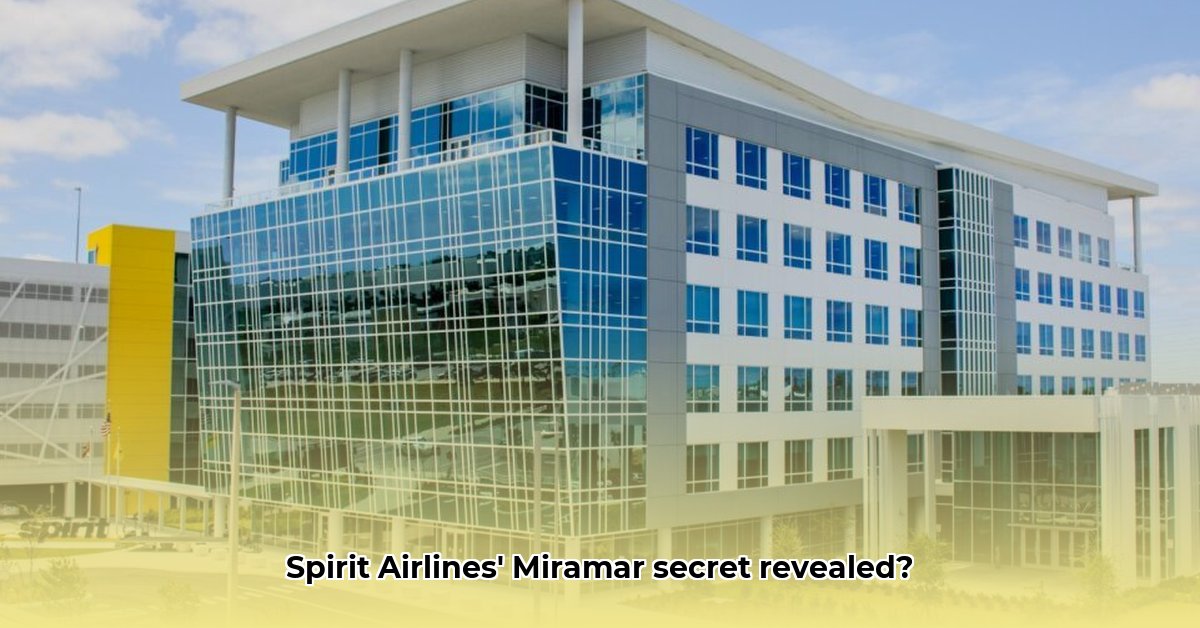
Spirit Airlines: Navigating the Ultra-Low-Cost Skies
Spirit Airlines, headquartered at 2800 Executive Way in Miramar, Florida, has carved a unique niche in the airline industry as a dominant ultra-low-cost carrier (ULCC). This strategy, built on incredibly low base fares and ancillary revenue, has made Spirit a recognizable name, but also a source of both praise and criticism. Their success—and future—depend on a delicate balancing act between cost-cutting and customer satisfaction. This article delves into Spirit's operational model, the challenges they face, and their prospects for the future. Learn more about Miramar's business landscape by visiting this site.
The Spirit Model: A Deep Dive into Ultra-Low-Cost Operations
Spirit's success hinges on its commitment to operational efficiency, a core tenet of its ULCC business model. This involves standardized aircraft fleets to simplify maintenance and training, a route network designed to maximize passenger volume and minimize empty seats, and a ruthless focus on cost reduction across all departments. The airline's pricing strategy is equally crucial: incredibly low base fares attract price-sensitive travelers, while numerous ancillary fees—for baggage, seat selection, and other services—generate substantial revenue. This "unbundling" of services is central to their strategy; it's a calculated risk that bets on passengers prioritizing cost over convenience. But how effectively does this model perform in the long run?
Key Elements of Spirit's Strategy:
- Unbundled Services: A core element, relying heavily on added fees for baggage, seat selection, etc. (This allows for extremely low base ticket prices).
- Optimized Route Network: Carefully selected routes designed to maximize passenger load and minimize operational costs.
- Standardized Fleet: Reduces maintenance complexity and training needs.
- Data-Driven Decision Making: Extensive use of analytics to optimize pricing, routing, and other strategic decisions.
Challenges and Opportunities: Balancing Act at 2800 Executive Way
While the ULCC model has proved lucrative for Spirit, maintaining its effectiveness requires navigating several significant challenges. Competition from other ULCCs like Frontier and Allegiant is intense, pressurizing fares and profitability. Additionally, maintaining a balance between cost-cutting and an acceptable customer experience is a constant struggle. Negative reviews and reputation among passengers remains an ongoing concern. Moreover, the airline's business model is particularly sensitive to economic fluctuations; times of recession can significantly impact demand for air travel.
However, opportunities for growth exist. Expanding into new, underserved markets can reduce reliance on single regions, minimizing risk. Investment in technology to streamline operations, enhance customer service, and even offer personalized travel experiences are other crucial areas of focus. Finally, increasing focus on sustainability within the aviation industry presents exciting avenues for innovation. Will Spirit be able to capitalize on these opportunities?
Competitor Analysis: A Crowded Ultra-Low-Cost Sky
Spirit contends with a crowded field of competitors. Frontier Airlines, for example, uses a similar ULCC strategy, creating intense price competition. Traditional carriers like Southwest, although offering a fuller-service experience, sometimes undercut Spirit on pricing on specific routes. The competitive landscape requires ongoing adaptation and innovation to maintain a market share.
Future Outlook: Spirit's Flight Path from Miramar
Spirit Airlines' future is a complex equation. Factors like fluctuating fuel prices, economic downturns, and shifting consumer preferences all play a role. However, their well-established brand and efficient operations give them a solid foundation for future growth, provided they address areas like customer satisfaction. Their ability to innovate and adapt to a changing market, however, ultimately determines their success. To secure long-term growth, the airline's leadership at 2800 Executive Way must continue to refine its strategy.
- Strong Brand Recognition: Spirit has established a strong foothold in the budget travel landscape.
- Operational Efficiency: The cost-effectiveness of their operations remains a distinct advantage.
Network Development: Their route network offers a platform for expansion.
Customer Perception: Negative perceptions represent a significant challenge.
- Economic Vulnerability: The airline's business model is sensitive to economic swings.
- Competitive Pressure: Maintaining profitability in a highly competitive market requires ongoing innovation.
Conclusion: The Spirit of Adaptation
Spirit Airlines' success story demonstrates the power of a well-executed, albeit controversial, ULCC model. However, their future trajectory depends on their ability to address ongoing challenges, particularly those relating to customer satisfaction and their sensitivity to economic fluctuations. By leveraging their operational efficiency and innovating to improve the passenger experience, Spirit can not only survive but also thrive in the increasingly competitive airline industry. The flight plan from 2800 Executive Way remains to be written, but with the right strategy, Spirit can ensure it’s a successful one.